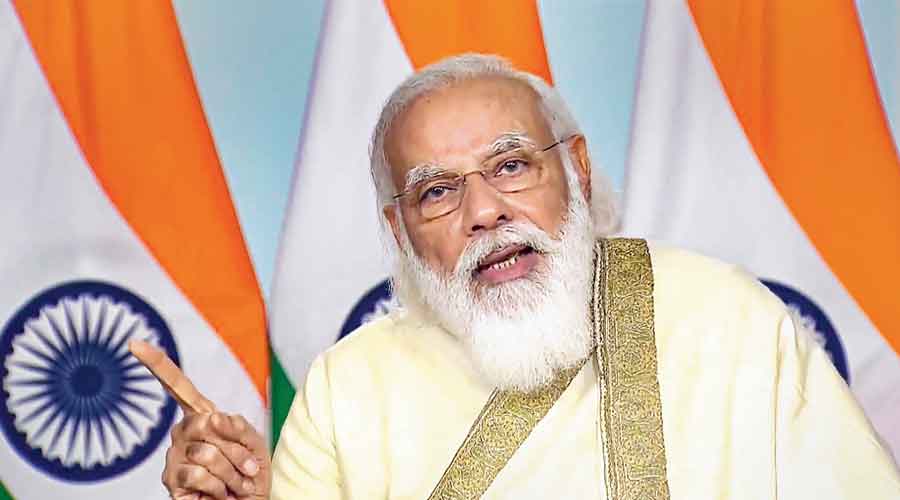The government plans to cut energy imports and reduce carbon emissions, Prime Minister Narendra Modi said while inaugurating a 450km natural gas pipeline between Kochi in Kerala to Mangalore in Karnataka, which has been built at a cost of Rs 3,000 crore.
Modi said the country’s natural gas pipeline network will be doubled to about 32,000km in 5-6 years. “The first interstate natural gas pipeline of the country was commissioned in 1987 and by 2014, India had 15,000 kilometres of natural gas pipeline built. Today there are over 16,000 kilometres of new gas pipelines being worked upon. This work is going to be complete in the next 5 to 6 years,” he said.
The Kochi-Mangalore pipeline built by GAIL (India) will enable industries, households and automobiles to migrate to the cleaner fuel. It will help set up 700 compressed natural gas (CNG) stations and 2.1 million people avail piped natural gas (PNG).
Under the one nation-one gas grid plan, nearly 1,500km of pipeline has been laid last year. The target is to invest $60 billion in four years in pipelines, liquefied natural gas (LNG) terminals and city gas distribution networks.
India’s push for a gas-based economy assumes significance as the country is the biggest emitter of greenhouse gases after the US and China and is among the most vulnerable to climate change. India plans to reduce its carbon footprint by 33-35 per cent from its 2005 levels by 2030 as part of its commitments to the United Nations Framework Convention on Climate Change adopted by 195 countries in Paris in 2015.
Gas comprises about 6.2 per cent of India’s primary energy mix, far behind the global average of 24 per cent. The government plans to increase this share to 15 per cent by 2030. The demand is expected to be driven by fertiliser, power, city gas distribution, and steel sectors.
The Centre also plans to boost domestic gas production by 40 million standard cubic meters a day (mscmd) from 80 mscmd at present.
Modi said work had also begun on the world's biggest hybrid renewable plant combining wind and solar power in Gujarat.
Emphasis will be laid on manufacturing biofuels as well as electric mobility.
In 10 years' time, petrol will be mixed with as much as 20 per cent of ethanol extracted from sugarcane and other agro products, he said. The number of CNG stations in the country will be raised to 10,000 from 1,500 at present.
India is the fourth-largest importer of LNG. Some of the strategies adopted to meet the objective of energy security and energy transition include a faster clean energy trajectory by leveraging natural gas and green hydrogen. The country is projected to see over $300 billion investment by 2030 in the oil and gas sector to meet rising demand.











